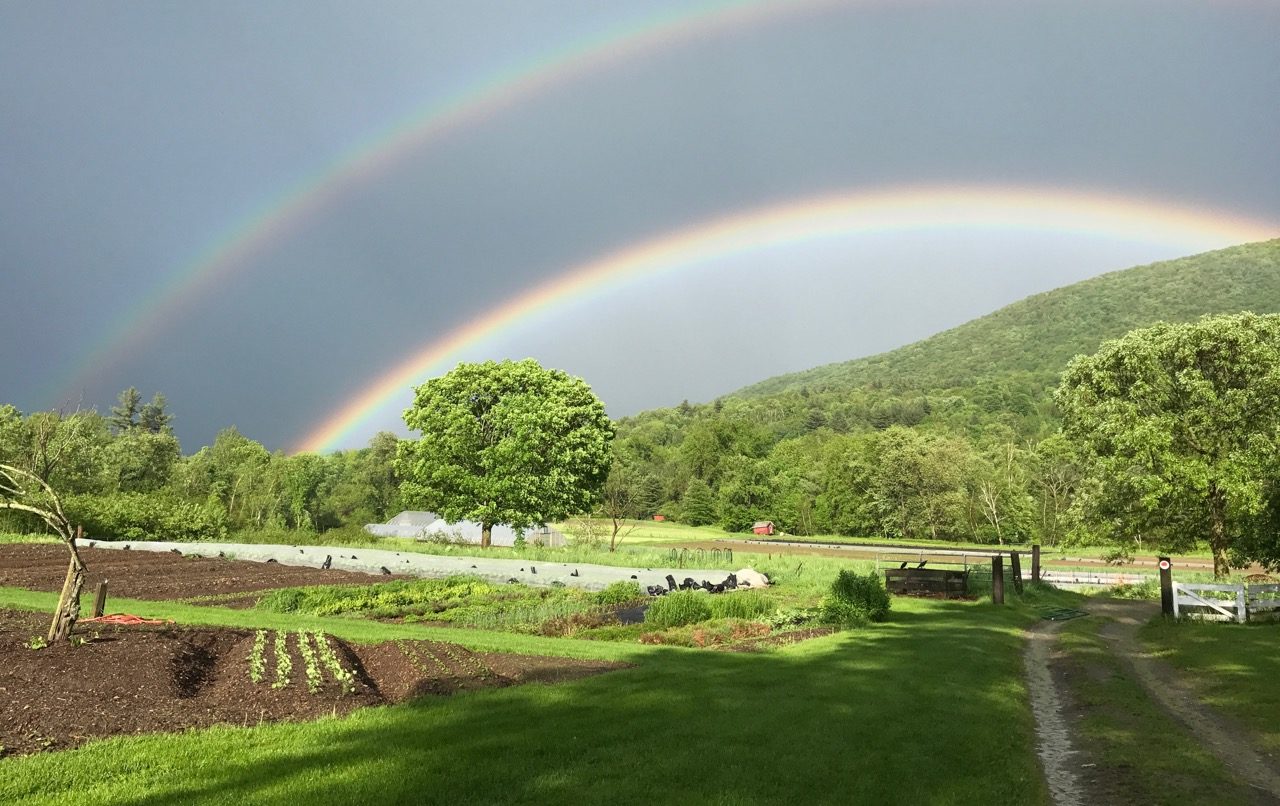Property Tax Savings
 Property Tax Savings for Farmland
Property Tax Savings for Farmland
Differential assessment and current use programs help owners of farmland and other open spaces pay lower property taxes.
Property is generally taxed by various levels of government (municipal, county, and state). Generally, the more valuable the property, the higher the property tax. Value is typically assessed by the government based on the idea of “highest and best use.” This means the use that would make the land the most valuable. Typically “highest and best use” is deemed to be commercial or residential development. It’s usually not agricultural use.
Agricultural operations can span many acres, which would make property taxes on farmland very, very expensive if it were taxed at its “highest and best use.” If left unchecked, property taxes on farmland could be far too high for farms to be economically viable. To address this problem and make owning farmland more affordable, governments have policies to lower the property taxes of farmland and other open spaces. These programs go by different names, with “differential assessment” and “current use” being the most common descriptions.
Differential assessment programs are state property tax programs designed to help encourage the economic viability of agriculture through property tax relief. These programs take into account farmers’ “current use” of the land for agricultural purposes and generally direct local governments to assess and tax agricultural land at its value for agriculture. The agricultural value is typically lower, sometimes much lower, than full fair market value. Differential assessment and current use programs are intended to help farmers stay in business by reducing their property taxes. This in turn protects farmland by easing the financial pressures that force some farmers to sell their land for development.
Farmer Spotlight:
Caretaker Farm

Don Zasada and Bridget Spann met in Chile while volunteering in a rural village. After living in Boston, the two wanted to move away from the city and find a long-term farming situation.
 How Does Differential Assessment Work?
How Does Differential Assessment Work?
When farmland is assessed based on its agricultural use instead of its full fair market value, the landowner generally pays less in property taxes. In exchange for the tax reduction, differential assessment programs generally require the landowner to agree to keep the land in agricultural use. Sometimes, other requirements can apply. Farmers and landowners should consult applicable state law and consider engaging an attorney for assistance in understanding the tax law and its potential effect on your farm operation. All states have differential assessment of one kind or another. At the end of this section you can click on your state to learn more about how farmers in your state can take advantage of lower property taxes on agricultural land.
Current use tax rates account for the fact that farmland usually is less costly for the government than residential or commercial properties because farms typically do not need as many services. This is true even though farms are necessarily bigger than most other types of properties. As a result, in many cases, taxing farms at the same rate as all other landowners would have a disproportionate negative effect on farms. In this way, differential assessment and current use helps encourage the preservation of farmland.
Differential assessment is not the same as a conservation easement, OPAV, or affirmative agricultural easement. Differential assessment relates to property taxes, while easements and OPAVs relate to limiting use of property to further conservation or farmland preservation values. However, keeping farmland in agricultural use via a permanent easement or OPAV can help farmers qualify for their state’s differential assessment or current use program. Additionally, differential assessment is generally more temporary in nature while easement and OPAV tools are generally more permanent in nature.
Key Aspects of Differential Assessment Programs
Differential assessment programs are state programs. This means that the particulars of any given program vary significantly from state to state. At the same time, there are certain common elements that differential assessment programs generally share:
Eligibility Requirements
- Most states have a standardized set of requirements along with an application package that must be submitted for a property to be enrolled. Examples of eligibility requirements include minimum acres in production or a commitment to keep land open to the public.
Property Tax Benefits
- Most states spell out in their laws how the farmland will benefit, tax-wise, from enrolling in current use or another differential assessment.
Removal From Program
- Most states describe in their laws what happens when the farmland no longer qualifies for the program, and sometimes this may include a financial penalty.
Re-enrollment of Land by New Landowner
- When land is bought and sold, most states have a process for the new landowner to continue the differential assessment without any interruption in the tax benefit.
Impact on Future Landowners
Future landowners can usually continue differential assessment programs after they have purchased a farm, but they are not required to do so.
Generally, if a new landowner wants the program to continue on the property, the new landowner must submit specific paperwork or online forms within a designated amount of time. Sometimes the deadline can be relatively quick. For example, in Minnesota, a new owner must apply within 30 days of the purchase. Usually, the applicable government branch will make sure the new landowner still qualifies for the program.
New landowners are not required to remain in differential assessment programs. Most times, there is no penalty if the new owner chooses not to apply. However, the new owner will lose the discounted tax rate and instead will be taxed at the regular (higher) tax rate. Sometimes, though, when a new landowner decides not to renew the differential assessment, either the new landowner or the prior landowner will be subject to a financial penalty.
Impact on the Value of Land
Although differential assessment allows farmland to be taxed at only its (lower) agricultural value, differential assessment does not directly affect the sale price of the land. If a landowner chooses to transfer or sell their enrolled land, the land is generally priced at its full fair market value.
Enrolling Leased Land
Most states allow farmers to enroll leased land in differential assessment programs. A farmer leasing farmland has the unique opportunity to leverage a differential assessment program during rent negotiations. Specifically, in exchange for lower rent, a farmer could agree to work the land in a way that allows the landowner to enroll in the program and receive decreased property tax payments. The landowner benefits by lowering tax payments and the tenant farmer benefits by lowering rent payments.
However, some state programs have specific requirements for leasing enrolled land. For example, in Vermont, the lease must be for at least three years and in writing, and in Connecticut, the tenant farmer must sign the current use application.
Violating or Ending a Program
If a landowner is enrolled in a differential assessment or current use programs and violates the program requirements, the landowner will almost always face a fee or monetary penalty. Common violations include allowing some or all of the land to be developed or taking it out of agricultural production in some other way. This tax is commonly known as the LUCT – Land Use Change Tax. This type of tax is meant to make up for all the prior years of reduced taxation now that the land will no longer be set aside for open space or farming. If only a portion of the land violates the requirements, usually only that portion will be subject to the penalty.
Property taxes can hurt a farmer’s ability to make a profit. Enrolling in differential assessment may decrease property tax burdens and allow investment into a farming business. However, depending on the state and how long the land was enrolled, the penalty for stopping differential assessment could be greater than the tax savings over the years.
 State-By-State Resources
State-By-State Resources
 How an Attorney Can Help
How an Attorney Can Help
The Attorney’s Role
It’s not an attorney’s job to make decisions for farmers or to set farm transfer goals. Instead, attorneys can provide information about pros and cons of different options, advice about what is common versus unusual, fair versus unfair, etc. Attorneys can help farmers understand the range of possible farm transfer goals and help narrow down individual options so that farmers can make final decisions.
How An Attorney Can Help With Differential Assessment
- Complete the required application package.
- Help decide which parts of the farm to put into differential assessment and which to exclude.
- Help determine whether differential assessment will be a savings in the long term.
- Explain the pros and cons of differential assessment versus a conservation easement or other conservation tools.
- Determine a strategy for combining differential assessment with other transfer or conservation tools.
- Help farmers understand the possible tax implications, including any possible penalties.
Related Legal Tools



The Center for Agriculture and Food Systems is an initiative of Vermont Law School, and this toolkit provides general legal information for educational purposes only. It is not meant to substitute, and should not be relied upon, for legal advice. Each farmer’s circumstances are unique, state laws vary, and the information contained herein is specific to the time of publication. Accordingly, for legal advice, please consult an attorney licensed in your state.

